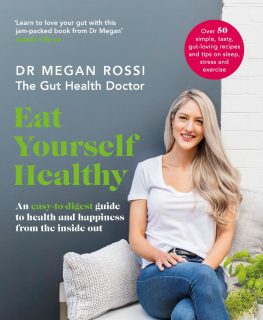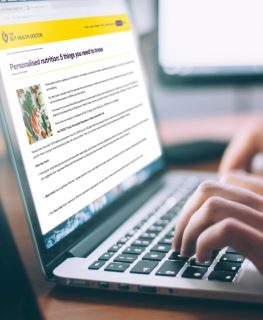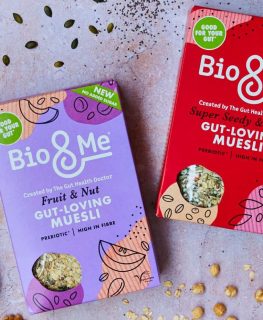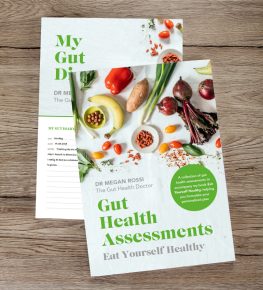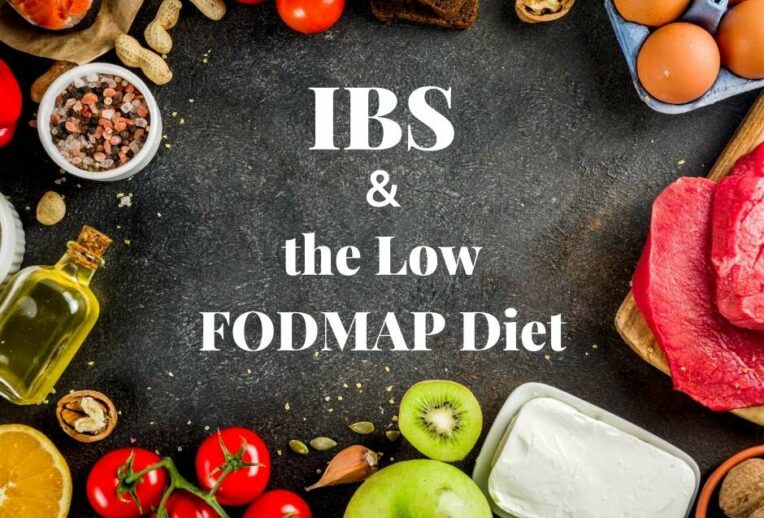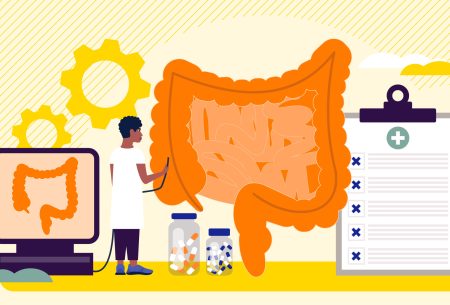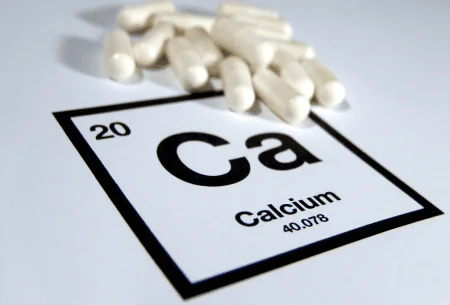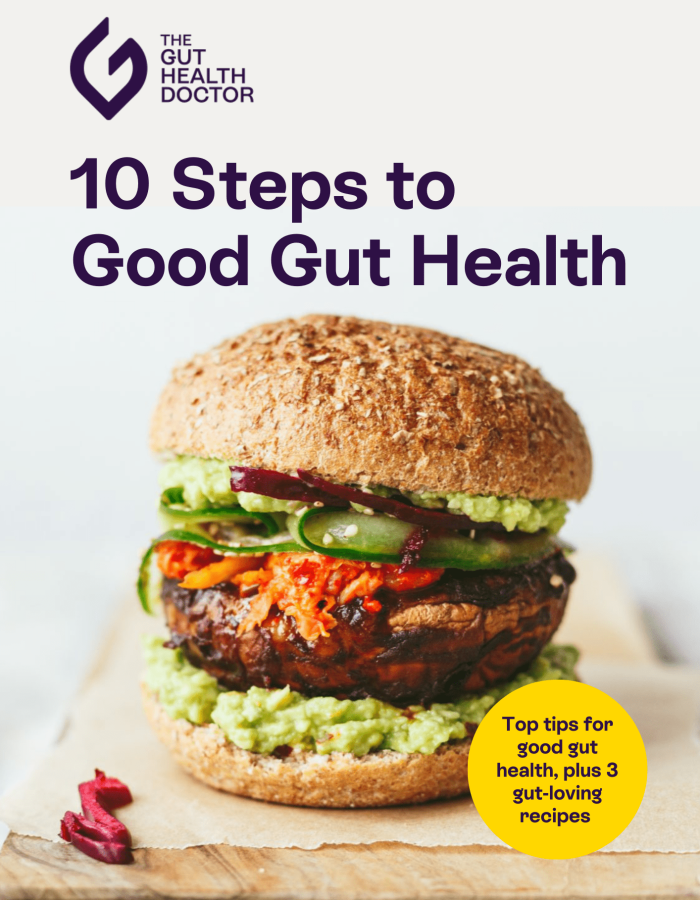If you are diagnosed with Irritable bowel Syndrome (IBS)- you are not alone and it is quite likely you have heard of the low FODMAP diet. It is estimated that 10 – 15% of the population worldwide have the diagnosis. What causes IBS exactly is unclear however it is believed to be due to dysfunction between the brain and the gut communication and is characterised by the presence of abdominal pain and/or discomfort with bloating, distention, and constipation and diarrhoea. Other symptoms such as incomplete evacuation and urgency to open bowels as well as fatigue are common. The onset of these symptoms can be very unpredictable and variable in its nature and they can have a debilitating impact on the quality of life of a person with IBS.
We discussed first-line strategies in our post last week (here). For some people those techniques aren’t quite enough and we need to think about other things we can do. One of these options is the low FODMAP diet.
What is the low FODMAP diet?
A Low FODMAP diet is a short-term therapeutic diet for people with IBS, and is the only evidence-based diet in the treatment of IBS. This dietary approach has been shown to reduce pain, discomfort, bloating and distention and improve bowel habits and overall quality of life in IBS in 3 out of 4 people – proving it really can be effective! The aim of the diet is to allow people to be more in control of their IBS. It does not cure IBS but helps to manage it better whilst controlling the symptoms.
FODMAPs stand for:
Fermentable
Oligosaccharides
Disaccharides
and
Polyols
This essentially refers to a group of carbohydrates ( or sugars) that are not completely digested or absorbed in our intestines.
A look in closer detail at what happens when we eat FODMAPs:
After your food has passed your stomach it enters your small intestine. There the FODMAPs (molecules of carbohydrate) move slowly and draw water into the bowel. When they then pass into the large intestine, they are fermented by the gut bacteria which produces gas. This extra gas and water causes the intestines to stretch leading to exaggerated feelings of abdominal pain and discomfort.
Note that for people without IBS, these events still occur within the gut without triggering any symptoms. For those with IBS, they have a highly sensitive gut wall (aka visceral hypersensitivity) and/or altered gut motility which means these passing FODMAPs trigger symptoms such as pain, excessive wind, bloating, distension and altered bowel habit (diarrhoea, constipation or both). Hence, reducing your intake of these high FODMAP foods can reduce such symptoms.
How do you follow a low FODMAP diet?
The Low FODMAP diet is a 3 phase diet therapy:
- Restriction/Elimination phase where high FODMAP foods are removed from the diet. This should be for 2-6 weeks, and no longer than 8 weeks.
- Reintroduction/Challenge phase to systematically identify threshold and tolerance levels.
- Personalisation/Maintenance phase to design a long-term healthy eating pattern consisting of tolerated foods.
Commonly asked questions
Where are FODMAPs found?
FODMAPs are contained in many foods that form an important part of a healthy balanced diet such as wheat, yoghurt, apples, dates, onion, garlic, animal milks, beans and lentils.
Should I go gluten free?
During the first “elimination” phase wheat, rye, and barley are restricted. FODMAPs are carbohydrates (sugars) found in these cereals, whereas gluten is the protein in them. It is often thought that IBS symptoms are exacerbated by gluten. However in the majority of cases this is not true as the osmotic effect and fermentation are caused by malabsorbed carbohydrates (FODMAPS) in the intestine and not a protein (gluten). By choosing gluten-free you may also be choosing a food that is low FODMAP. But some gluten-free foods are not suitable on a low FODMAP diet because they actually have high FODMAP ingredients like onion, garlic, chicory root and honey added. This is where the label and ingredient list reading comes useful – the low FODMAP diet is not a strict gluten free diet such as required in Coeliac disease for example. Your dietitian will help guide you to suitable products.
If I feel better on the low FODMAP diet, why should I reintroduce?
Being on a low FODMAP diet long term will result in diminished beneficial microbes and can lead to negative changes in the gut microbiota.
Certain FODMAPs have prebiotic effects(food for gut bacteria): namely “fructans” found in wheat, onion and garlic, and galacto-oligosaccharides (GOS) in lentils and beans. A low FODMAP diet restricts intake of these particular prebiotic fibres that promotes good gut health by stimulating growth of good bacteria in the large intestine and maintaining a diverse microbial population.
It is therefore of great importance to systematically complete the Reintroduction and Personalisation phases to establish just how much fructans and GOS can be tolerated and to include them regularly in the diet. This will lead to a greater variety in the diet as well as more healthy gut microbiota composition.
What do I do about eating out?
Eating out whilst on a low FODMAP diet can be a challenge for some. Strategies like planning in advance, calling the restaurant beforehand or downloading their menu to find a suitable meal option (or one that could be easily modified e.g. asking for no garlic) before you go, perhaps can take a load of pressure off and reduce overall anxiety and stress, which in themselves can often exacerbate IBS symptoms. You may prefer to cook meals at home for the month that you do the low FODMAP diet. Don’t worry too much if you accidentally eat some high FODMAP foods – you may have a slight increase in symptoms, but they should settle within a couple of days, just return to the diet for the next and subsequent meals.
[elementor-template id=”3024″]
I don’t think I can get enough fibre on the low FODMAP diet?
One of the challenges of the Low FODMAP diet is actually eating enough fibre and getting the right mix of different types of fibres. It is important to remember that this is a low FODMAP diet, not a no FODMAP diet.
Your dietitian (who should have training in the use of the low FODMAP diet) will ensure the diet remains balanced and nutrient dense. In our clinic we discuss the suitable lower FODMAP food swaps and suitable prebiotics portions that can be enjoyed as part of the low FODMAP diet. We also provide ideas or links to recipes as well as suitable products that have been certified as low FODMAP. Field Doctor meals for example (developed by a dietitian plus chef) can be really handy during the restriction phase – they’re loaded with fibre, but importantly also flavour, and can take the stress out of cooking every night. We’ve teamed up with the team at Field Doctor to develop our own custom bundles for the low FODMAP diet which you can get a discount on by using the code TGHC20.
[elementor-template id=”2919″]
I’ve seen apps and websites, can I do the low FODMAP diet on my own?
We wouldn’t advise this, as not all sources online are accurate. The Monash app is trustworthy however, but research indicates higher success rates when the low FODMAP diet is guided by a dietitian. You have a higher chance of understanding how to follow the diet to improve your symptoms and not sacrificing your joy of food.
Summary
In summary, a low FODMAP diet can be a lifesaver for people with IBS as it allows symptoms control and more freedom to enjoy food. However this dietary approach is intended to be short term only; long term impact on the gut microbiota should be taken into account. That is why it is best followed with the support of a registered dietitian who specialises in IBS and has had the relevant training – so that you achieve the best results and maintain a balanced dietary intake whilst on this therapeutic diet.
All of the dietitians here at The Gut Health Clinic have had their FODMAP training so you’ll be safe hands with any one of us.



